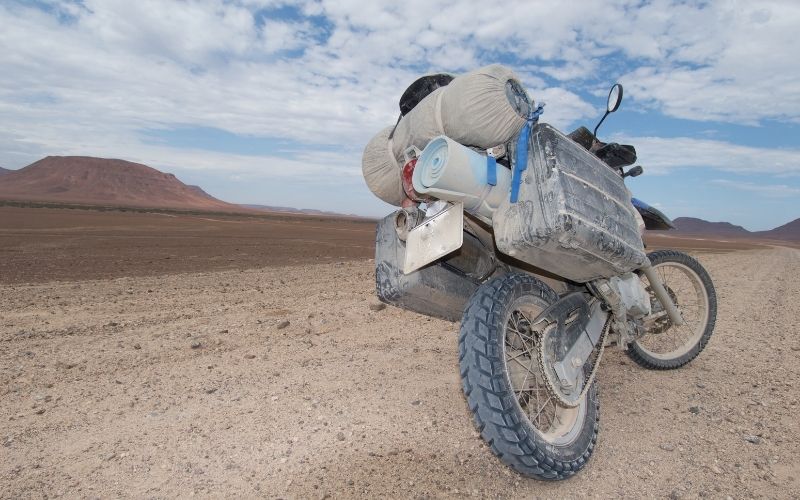There’s nothing quite like packing up your motorcycle and hitting the open road for an adventure.
And if you’re planning to do a bit of camping while you’re out there, it’s important to know how to pack everything you need without overweighting your bike.
In this post, we’ll give you some tips on how to pack for motorcycle camping without overloading your bike and ruining your trip.
The key is to pack as little as possible and to travel light, only taking the things that you really need. Heavy items should go into panniers with fragile and valuable items going into a tank bag.
Table of Contents
Packing for motorcycle camping
When you’re packing for motorcycle camping, the key is to travel light.
You don’t want to overload your bike and ruin your trip, so it’s important to only take the things that you really need.
Of course, what you need will vary depending on the length of your trip and the type of camping you’re doing.
For example, if you’re going to be doing a lot of cooking, you’ll need to pack more kitchen gear than if you’re planning on eating out most of the time.
The best way to figure out what you need is to make a list of everything you might want and then narrow it down from there.
Start by packing your basic essentials, like clothing, camping gear, and personal items.
Then add in any extras that you think will be useful or fun, like a book to read at the end of the day or other accessories.
Are you travelling with others?
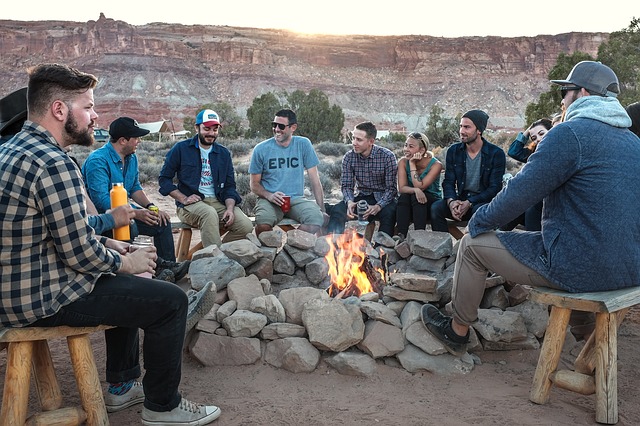
If so then you can share the packing load, for example you don’t need two camp stoves so one can take a stove and the other can take something else.
Work through your camping lists with your other travellers so that you can remove duplicate items and combine the load across the bikes.
Packing your bags
When it comes to packing your panniers or luggage bags, always think about the weight and how it will impact on your bike.
Make sure that you distribute the weight evenly across all of your bags so that they don’t affect the handling and balance of your bike.
And keep in mind that lighter is always better, especially if you’re planning on doing a lot of off-roading or riding over rough terrain.
Giant Loop Mototrekk Panniers, Waterproof Side Luggage Rack-Mounted, Universal Fit, Ideal for Adventure Touring, Sport Touring, Dual Sport & More
Heavy items need to be kept low down as this will reduce any adverse effects on the bike’s handling.
Panniers on either side at the rear of your bike provide the most secure and safest option for storage of heavy luggage, plus, if you are unfortunate enough to take a tumble, the panniers will provide some protection from the fall.
The lighter items should be positioned higher up such as in a tank bag, strapped onto the pillion seat or carried in a rucksack on your back.
Tips for packing your camp gear
When it comes to packing your camping gear, there are a few key tips that can make all the difference.
First and foremost, always opt for lightweight and compact items where possible.
That way you’ll be able to fit more into your bags without overloading them.
You should also choose gear that can serve multiple purposes.
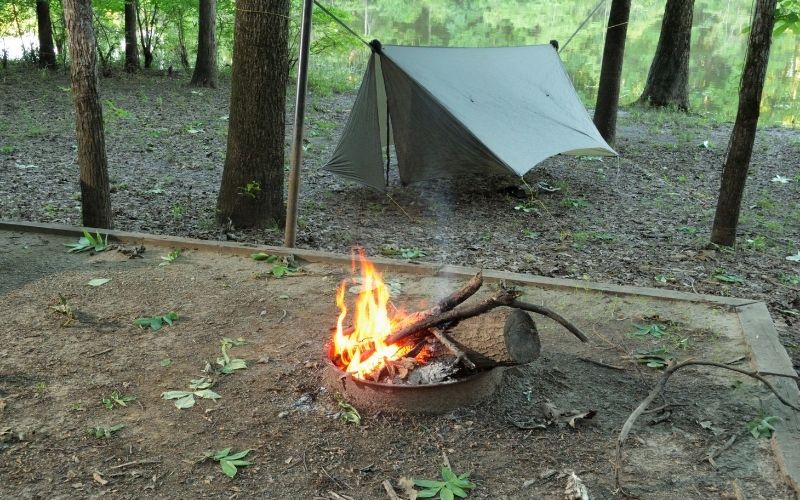
For example, a tarp can be used as both a shelter and a groundsheet.
And finally, make sure you pack everything securely so that it doesn’t move around or fall out while you’re riding.
Packing properly will not only help to keep your belongings safe, but it will also help to protect your bike from any damage.
Packing your clothes
When packing your clothes, always start with the basics and then add in any extras that you think you might need.
A good general rule of thumb is to pack one week’s worth of clothes, although this will obviously vary depending on the length of your trip.
If you’re unsure what to take, err on the side of caution and pack more rather than less.
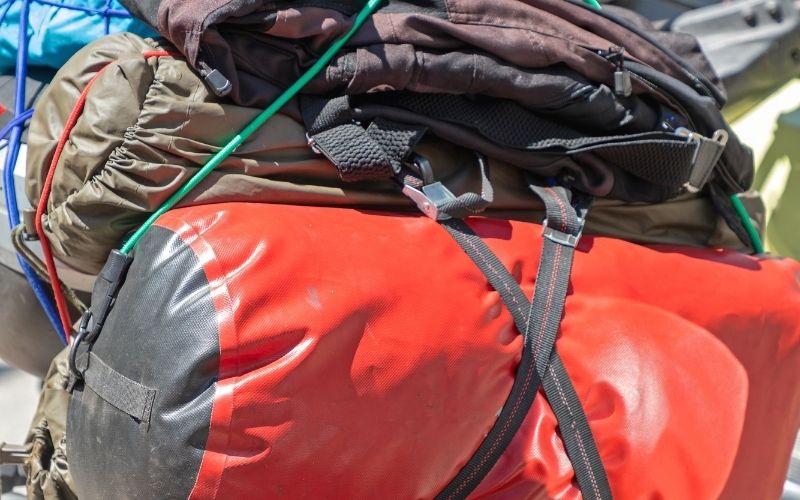
You can always leave clothes behind if you don’t end up using them.
And when it comes to choosing your clothes, always opt for items that are comfortable, durable, and easy to wash.
That way you’ll be able to wear them multiple times without getting sick of them.
Pack clothes that will suit the climate you’re travelling in, and bring a few changes of underwear and socks so that you can wash these items along the way.
In terms of accessories, it’s always wise to pack a sturdy pair of shoes for hiking and for general walking around.
You’ll also want to bring a hat, sunglasses, and sunscreen to protect you from the sun.
Pack your food and drink
When packing food and drink for your trip, always think about what you’ll need to keep you going.
If you’re planning on doing a lot of cooking, then make sure you pack enough food to last you the entire trip either this or make sure that there is somewhere close to your camp where you can buy provisions.
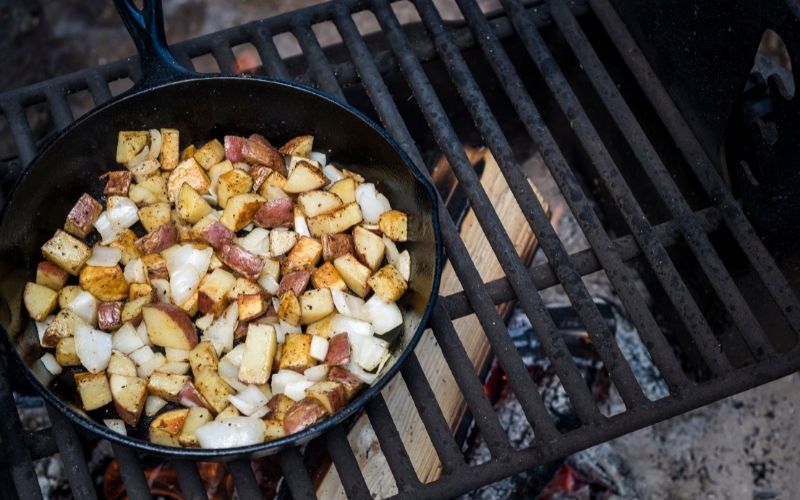
And if you’re not planning on cooking, then bring along plenty of snacks and easy-to-prepare meals such as sandwiches, pasta, and rice dishes.
In terms of drink, always pack plenty of water to keep you hydrated.
And if you’re travelling in a hot climate, then consider packing some sports drinks or electrolyte tablets to help you stay hydrated.
Finally, don’t forget to pack a few drinks for the evenings too.
A couple of bottles of wine or beer will help you to relax after a long day on the bike.
Packing your camping gear
When it comes to packing your camping gear, there are a few key items that you’ll need to take with you.
First and foremost, you’ll need a good tent.
Choose one that’s lightweight and easy to set up so that you’re not struggling with it in the dark after a long day on the bike.
You’ll also need a sleeping bag and mattress, both of which should be comfortable and easy to pack.
Other key items include a camping stove, pots and pans, utensils, a campfire grill, and plenty of cooking fuel.
Also make sure you bring along any outdoor gadgets that you might need such as a GPS or a camping lantern.
Garmin zūmo XT, All-Terrain Motorcycle GPS Navigation Device, 5.5-inch Ultrabright and Rain-Resistant Display
$469.99 in stock
6 used from $399.99
And don’t forget to pack some spare batteries for these items too.
In terms of safety and security, always make sure you pack a first-aid kit and a few basic tools such as a Swiss army knife.
It’s also a good idea to bring along a map of the area so that you can easily find your way around.
And finally, it’s always worth packing a few zipper bags or storage containers.
These will come in handy for storing food and keeping your belongings organised.
Final Words
Ultimately, packing for a bike trip can be quite a daunting task.
But if you take the time to plan ahead and make sure you have everything you need, then your trip will be much smoother and more enjoyable.
Remember keep the weight evenly balanced with heavier items lower down, share the load with friends and only take what you really need.

